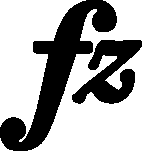



Articulation, Accents, Hairpins
|
b. 211-212
|
composition: Op. 11, Concerto in E minor, Mvt I
..
Six consecutive category imprint: Interpretations within context; Editorial revisions issues: Long accents |
||||||||
|
b. 236
|
composition: Op. 11, Concerto in E minor, Mvt I
..
We reproduce the four horizontal dashes written in FED, perhaps by Chopin, as wedges, since the Chopinesque wedges generally look like that in the autographs. However, it seems to be unlikely that Chopin would actually mean staccato in this place (not to mention staccatissimo). These marks are most probably to be interpreted together with the slur, as an indication of the portato articulation, close to the one the composer would usually mark with dots under a slur, e.g. in bar 231. category imprint: Differences between sources |
||||||||
|
b. 249
|
composition: Op. 11, Concerto in E minor, Mvt I
..
In this context, a short accent is almost certainly a result of misunderstanding Chopin's notation. In bar 225, Chopin used a long accent, in bar 233 – a vertical one; therefore, in the discussed bar he probably meant a long accent. category imprint: Editorial revisions issues: Long accents |
||||||||
|
b. 258
|
composition: Op. 11, Concerto in E minor, Mvt I
..
A few subsequent category imprint: Interpretations within context issues: Long accents |
||||||||
|
b. 269-270
|
composition: Op. 11, Concerto in E minor, Mvt I
..
Interpretation of the mark of FE (→EE) is unclear. When interpreted literally, it is a short accent under a tied note, which does not make sense on the piano. According to us, the course of music suggests a long accent on the syncopated g category imprint: Interpretations within context; Editorial revisions issues: Long accents , Inaccuracies in GE , GE revisions |


 in
in 








 ) – if the octave, filling the entire bar, was written according to his custom, i.e. in the middle of the bar, then, after moving it to the beginning of the bar in print, the long accent mark, considered by the engraver to be a
) – if the octave, filling the entire bar, was written according to his custom, i.e. in the middle of the bar, then, after moving it to the beginning of the bar in print, the long accent mark, considered by the engraver to be a 



 1-g
1-g